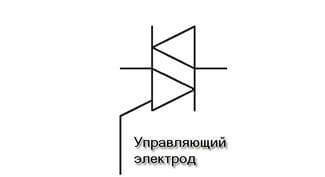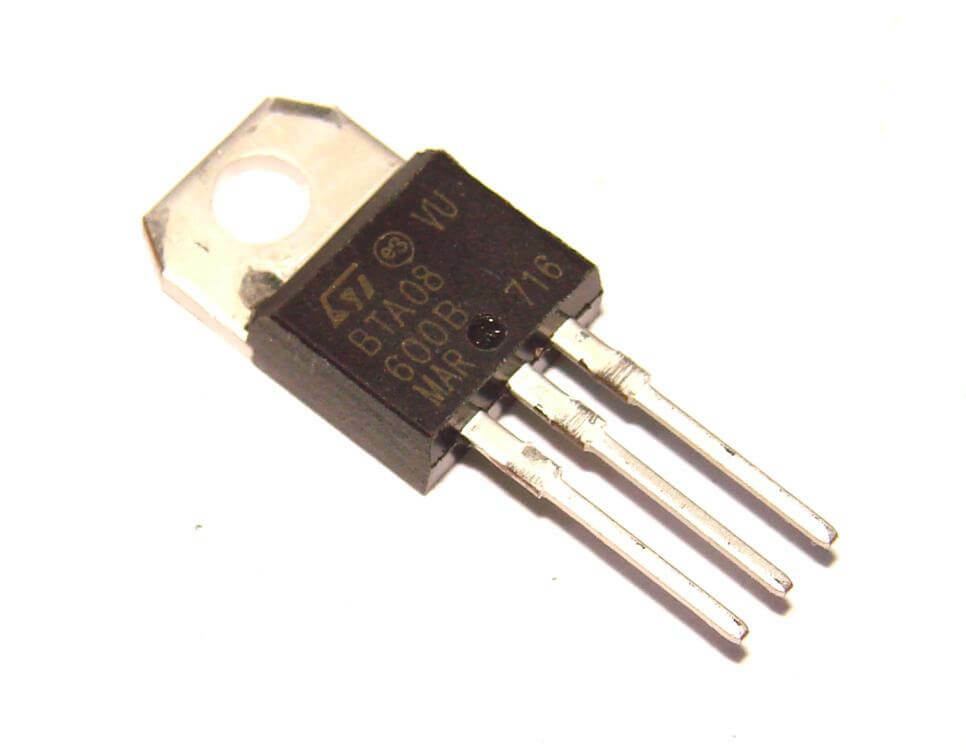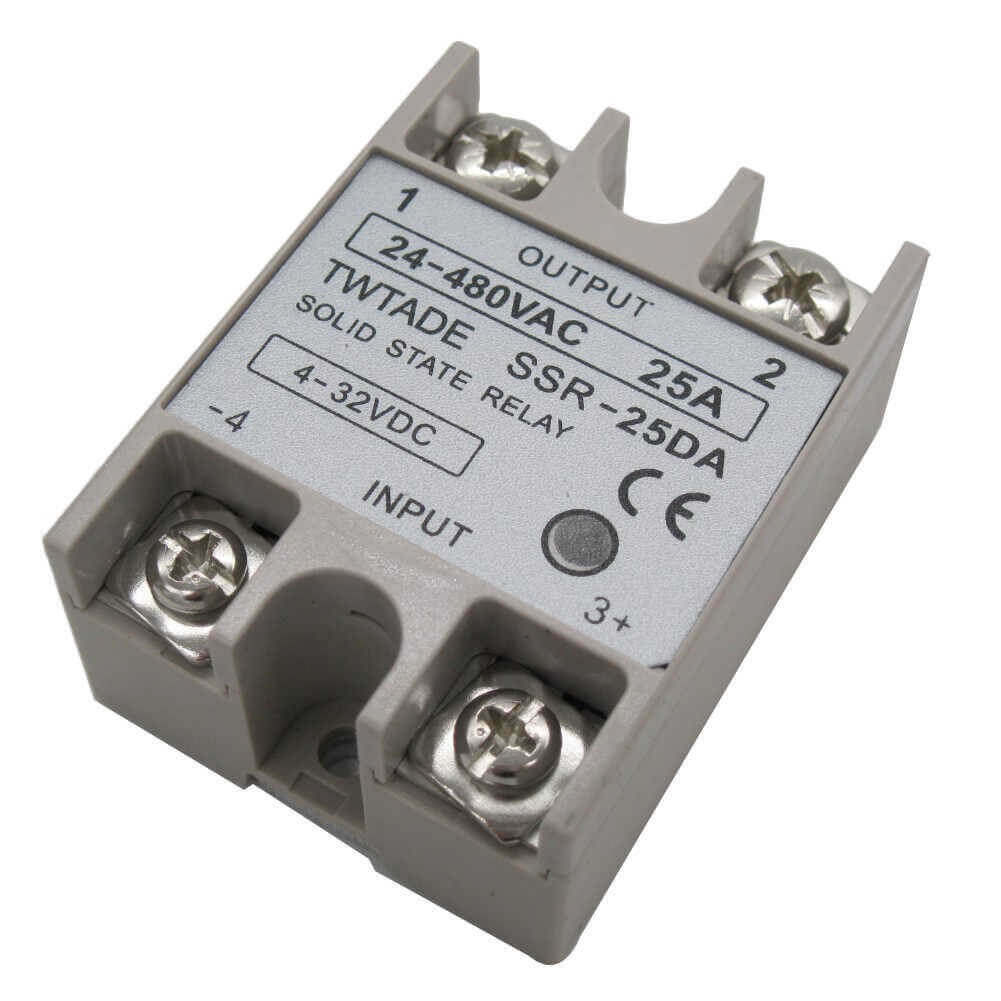A triac is a semiconductor device. Its full name is a symmetrical triode thyristor. Its peculiarity is that it is possible to conduct current in both directions. This circuit element has three outputs: one is the control, and the other two are power. In this article we will look at the principle of operation, device and purpose of the triac in various circuits of electrical appliances.
Content:
- Design and principle of operation
- Control signals
- Advantages and disadvantages
- Application area
- Main characteristics
Design and principle of operation
The peculiarity of the triac is the bi-directional conductivity of the electric current flowing through the device. The design of the device is based on the use of two anti-parallel thyristors with common control. This principle of operation gave the name from the abbreviated "symmetric thyristors". Since the electric current can flow in both directions, it makes no sense to designate the power terminals as anode and cathode. The control electrode complements the overall picture.
Symbols on the diagram in accordance with GOST:

The appearance is as follows:

There are five transitions in the triac, allowing you to organize two structures. Which one will be used depends on the place of formation (specific power output) of negative polarity.

How does a triac work? Initially, the semiconductor device is locked and no current flows through it. When a current is applied to the control electrode, the latter goes into the open state and the triac begins to pass current through itself. When operating on AC mains, the polarity of the contacts is constantly changing. The circuit where the element in question is used will work without problems. After all, the current is passed in both directions. In order for the triac to perform its functions, a current pulse is applied to the control electrode, after removing the pulse, the current through the conditional anode and the cathode continues to flow until the circuit is broken or they are energized with reverse polarity.
When used in an AC circuit, the triac closes on the reverse half-wave of a sine wave, then you need to apply a pulse of opposite polarity (the same one under which the "power" electrodes are located element).
The operating principle of the control system can be adjusted depending on the specific case and application. After opening and starting the flow, it is not necessary to supply current to the control electrode. The power circuit will not break. If necessary, turn off the power, reduce the current in the circuit below the level of the holding value or break the power circuit for a short time.
Control signals
To achieve the desired result with a triac, not voltage is used, but current. For the device to open, it must be at a certain small level. For each triac, the control current strength can be different, it can be found out from the datasheet for a specific element. For example, for a KU208 triac, this current must be greater than 160 mA, and for KU201, at least 70 mA.
The polarity of the control signal must match the polarity of the conventional anode. To control a triac, a switch and a current limiting are often used. resistorIf it is controlled by a microcontroller, you may need to install an additional transistor so as not to burn the MK output, or use a triac opto driver, such as MOC3041 and the like.

Four-quadrant triacs can be triggered with a signal of any polarity. This advantage also has the disadvantage that an increased control current may be required.
If absent, the device is replaced by two thyristors. In this case, it is necessary to correctly select their parameters and redo the control scheme. After all, the signal will be fed to two control outputs.
Advantages and disadvantages
What is the semiconductor device in question for? The most popular use is for AC switching. In this regard, the triac is very convenient - using a small element, you can control the high-voltage power supply.
Solutions are popular when they replace the usual electromechanical relay. The advantage of such a solution is that there is no physical contact, due to which turning on the power becomes more reliable, switching is noiseless, the resource is orders of magnitude larger, and the performance is higher. Another advantage of the triac is its relatively low price, which, together with the high reliability of the circuit and the MTBF, looks attractive.
The developers failed to completely avoid the drawbacks. For example, appliances get very hot under load. We have to provide heat removal. Powerful (or "power") triacs are installed on radiators. Another disadvantage affecting the use is the creation of harmonic electrical interference some circuits of triac controllers (for example, a household dimmer for dimming).
Note that the voltage across the loads will differ from the sinusoid, which is associated with the minimum voltage and current at which switching on is possible. Because of this, only a load that does not have high power requirements should be connected. When setting the problem to achieve a sinusoid, this switching method will not work. Triacs are highly susceptible to noise, transients and interference. Also, high switching frequencies are not supported.
Application area
The characteristics, low cost and simplicity of the device make it possible to successfully use triacs in industry and everyday life. You can find them:
- In the washing machine.
- In the oven.
- In the ovens.
- In the electric motor.
- In rotary hammers and drills.
- Dishwasher safe.
- In dimmers.
- In a vacuum cleaner.
This list is not limited to where this semiconductor device is used. The use of the conductive device in question is carried out in almost all electrical appliances that only exist in the house. It is entrusted with the function of controlling the rotation of the drive motor in washing machines; they are used on the control board to start the operation of all kinds of devices - it is easier to say where they are not.
Main characteristics
The considered semiconductor device is designed to control circuits. Regardless of where in the circuit it is used, the following characteristics of the triacs are important:
- Maximum voltage. An indicator that, being achieved on the power electrodes, will not cause, in theory, a failure. In fact, it is the maximum allowable value provided that the temperature range is observed. Be careful - even a short-term excess can result in the destruction of this circuit element.
- Maximum short-time impulse current in the open state. The peak value and the allowed period for it, specified in milliseconds.
- Working temperature range.
- Control gate voltage (corresponds to the minimum constant gate current).
- Switch-on time.
- Minimum DC control current required to turn on the instrument.
- Maximum repetitive off-state impulse voltage. This parameter is always indicated in the accompanying documentation. Indicates the critical voltage value, the limit for this device.
- Maximum voltage drop across the triac in the open state. Indicates the limit voltage that can be set between the power electrodes when open.
- Critical rate of rise of on-state current and off-state voltage. Indicated respectively in amperes and volts per second. Exceeding the recommended values can lead to a breakdown or an erroneous opening out of place. Ensure the operating conditions to comply with the recommended limits and eliminate interference in which the speaker exceeds the specified parameter.
- Triac body. Important for thermal calculations and affects power dissipation.
So we examined what a triac is, what it is responsible for, where it is used and what characteristics it has. Considered in simple language, the theoretical basics will lay the foundation for future effective activities. We hope the information provided was useful and interesting for you!

